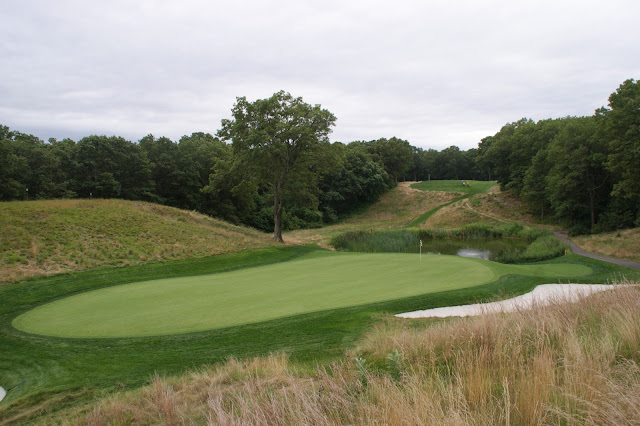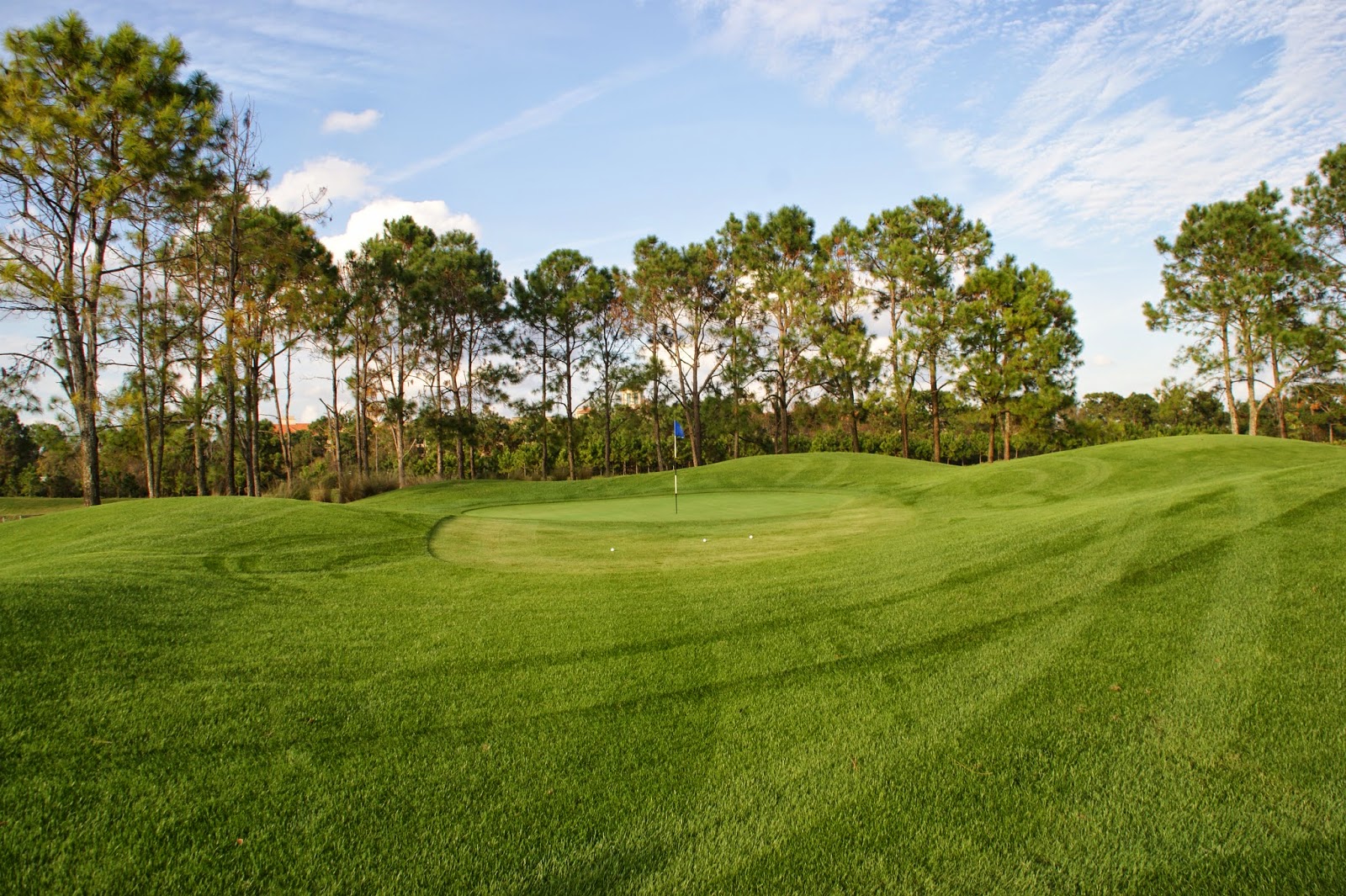I arrived in NYC 6 years ago and always had the desire to play the course which hosted the US Open 2002 (second US Open victory for Tiger Woods and his eighth "Major") and 2009. The course has also earned the right to host another upcoming Major: The 2019 PGA Championship !
This great and huge State Park contains 5 golf courses (!); and reservation system can be an obstacle for some golfers but thought I had to spend some energy to book and play there to fulfill my dream...
But now this is getting scary...

WHAT ARE THE MAIN CHARACTERISTICS OF BETHPAGE BLACK ?
FAIRWAYS are IMMACULATE and THIN;
It is so great to play on these perfectly maintained fairways and feels like playing on a billiard mat :-)
It's a LONG course;
Just to compare how difficult it is to hit greens in regulation, I've marked (red dots below) all Par 4 above 380 yards from the white tees (a distance that would be difficult to reach consistently for most players) and the results is 10 (of 11 in total) Par 4 are above 380 yards or 90% of them !
It looks (and is) NARROW;
Some fairways are narrow, 6 out of 14 (or 43%) are less than 25 yards (see table below) and especially because the rough is so penalizing, others don't feel extremely large either :-).
If your ball can carry 255 yards (230 meters) on hole 5 as an example, the fairway becomes larger on (same on hole 7).
(Source of picture: Google Maps)
If not, you need to pull a precise shot and place your ball within a range of 20 yards...
(Source of picture: Google Maps)
The first cut ROUGH is VERY DENSE;
Attacking the green from this rough is extremely hard, I was impressed by the difficulty to get out of it even with a 9 iron...
You feel stuck in it and you have to hit it pretty hard to get decent distance.
(Source of picture: http://www.caddybytes.com as I was too focused to get out of this rough rather than taking pictures of it...)
The FESCUE (yellow grass illustrated below) waits for your ball when you are not even in the "regular" rough; and it's extremely hard to get out of it, obviously...;
BUNKERS are everywhere and deep;
(Source of picture: Google Maps)
and...SCENERY is beautiful
The 18th hole is majestic and you can easily imagine how it would feel to play this hole with tons of spectators at the US Open...
It was an amazing golf experience and will go back better armed to hit less shots...ha ha




































